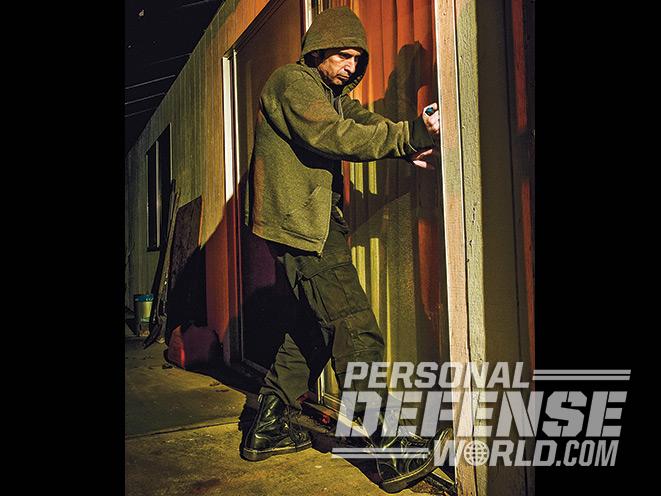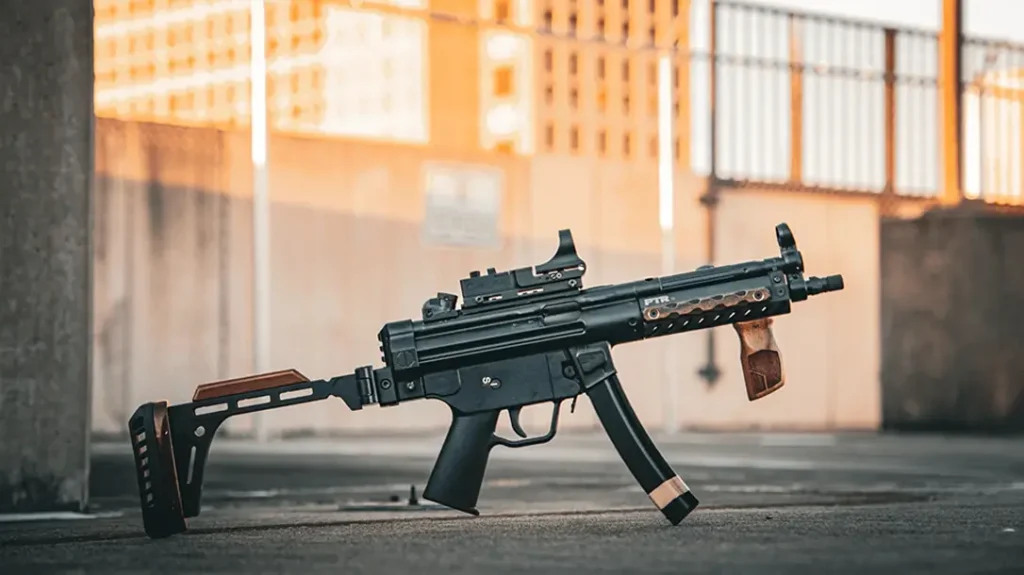No matter where you live, your home should be a safe haven for you and your family. Once inside, you should feel secure and protected from the threats of the outside world. Unfortunately, violent home invasions are becoming increasingly frequent and are happening in even the best neighborhoods. And because of this threat, we all need to take a hard look at our home security.
The best defense against a burglary or home invasion is making your home a hard target. Investing in the external security of your home by installing good physical barriers and warning systems will ideally deny criminals entry to your home completely. Even if your home isn’t completely invulnerable, sound physical security will provide a significant challenge that will slow criminals down, call attention to their actions and give you and your family time to react. The time, effort and noise it requires for an intruder to make his way through the outer layers of your home’s defenses gives you the opportunity to collect your family and retreat to a reinforced inner area to call 911 and access weapons to defend yourself.
Hard Target
Advertisement — Continue Reading Below

Good external physical security is also important because it has a great deterrent effect. In addition to making entry more difficult, the investments you make in physical security will also send a strong message to anyone even considering your home as a target, hopefully convincing them that they are better off looking for easier targets.
RELATED STORY: Urban Escape – Personal Safety & Security Survival Tips
Advertisement — Continue Reading Below
There are a number of key elements to a good home security system. Although the exact needs of your home or apartment may vary, you should consider all the following aspects of home “hardening” and address them as appropriate.
Take a look at your home from a criminal’s point of view and assess it from the outside. This assessment should include close scrutiny of your exterior lighting. By illuminating the exterior of your home, especially with motion-activated lights mounted high enough so they cannot be tampered with, you can prevent criminals from approaching your home unnoticed and deny them hiding places around your home. If the cost of having an electrician install hard-wired security lights is prohibitive, consider solar-powered security lights. They operate the same way as wired lights but charge via an attached solar panel. These can be placed virtually anywhere there is adequate sun exposure during the day to ensure a good charge.
Restricted Entry
Advertisement — Continue Reading Below

Many home invasions begin with the criminal simply kicking in your front door. Amazingly, most of the locksets and mounting hardware you’ll find on typical homes provide very little protection against this type of entry. A good, hard kick will easily break the door stile or the frame where the lock’s strike plate is anchored. This can happen so quickly and so suddenly that you have very little time to react and nobody outside your home really notices. The best way to prevent this type of entry—and a great way of establishing your home as a hard target—is to harden your front door.
First, choose a sturdy, solid-wood door or a steel-sheathed door. It should be hung with heavy-duty hinges installed with extra-long screws (like 3-inch deck screws), not the short ones that typically come in the package. To further strengthen the hinge side of the door, at least one screw in each hinge should be replaced with a security hinge screw or a similar arrangement to create a “pinned” hinge. A security hinge screw looks like a traditional wood screw, except that the head of the screw is extended above the countersunk portion to form an integral pin. When installed in the hinge, the pin extends about 0.375 to 0.5 inches above the surface of jamb side of the hinge and “nests” into the matching hole in the door side of the hinge. This reinforces the hinge joint in the closed position and prevents the door from being removed—even if the hinge pins are taken out.
RELATED STORY: Always On Guard – The Post-Shootout Threat Scan
Advertisement — Continue Reading Below
If you can’t find purpose-designed security screws, you can easily make your own by replacing one hinge screw with a steel nail, a piece of all-thread or a long lag screw. To do this, remove one of the screws from the jamb side of each hinge and the matching screw from the door side. If using a nail, cut the head off the nail and file the end smooth. Install the nail into the hole in the jamb side of the hinge, leaving about 0.5 inches extending above the surface of the hinge plate. When you close the door, the exposed portion of the nail should “nest” in the hole in the other side of the hinge. If necessary, ream that hole with a drill to accept the pin.
With the hinge side of the door reinforced, it’s time to turn our attention to the lock side. Don’t settle for an ordinary doorknob lock for your front door. These are weak and can be easily defeated. The security of your front door should only be trusted to a high-quality, name-brand deadbolt lock with a one-inch bolt throw. The interior side of the lock should be a knob-style; it should not be double-keyed. Removal of the internal key could prevent you from being able to leave your home in an emergency, so stick with a knob. If you do not have a steel-sheathed door, the area of the door around the lock should also be reinforced with a metal door reinforcement. This adds significantly to the strength of the door structure, reinforcing the stile at its weakest point where it is drilled to accept the lock hardware.
In order for a deadbolt lock to do its job, it must anchor solidly to the doorframe. The typical strike plate included with most locks is not up to this task. Instead, you need to invest in an extended, high-security strike plate. These strike plates are typically about 8 to 10 inches long, include multiple holes for mounting the plate and include extra-long screws that anchor the plate solidly into the framing structure behind the door frame, not just the wood of the jamb itself. Since many home invasions begin by the criminal simply kicking in the front door, a high-security strike plate is a must.
Advertisement — Continue Reading Below
Reinforcements

With a solid door properly installed as your front door barrier, your next step should be to ensure that there are no weak spots around the door that would compromise its function. The most common example of this is a window located immediately adjacent to the door. Although this window does offer the positive function of allowing a view of anyone standing outside your door, by simply breaking the window, a burglar or home invader could easily reach through and unlock the door.
The presence of a window adjacent to your doorframe also means that you do not have a solid structure around the entire frame. This weakens the overall structure of the door and compromises its function as a barrier. The “give” that exists in a poorly structured doorframe leaves it vulnerable to an attack with a pry bar. Inserted between the door and the jamb, the bar is levered to literally spread the two apart until the bolt clears the strike plate.
Advertisement — Continue Reading Below
Ideally, a weak door frame structure should be eliminated by having a competent contractor “fill in” that area with a solid structure. Brick, sturdy wood framing or even glass or plastic blocks would significantly increase your front-door security. If this is not possible, you should at least prevent someone from being able to access the lock if he breaks the window by covering the interior of the window frame with a sheet of strong Plexiglas or Lexan plastic, screwed firmly into the wood.
If filling in the window near your front door limits your ability to see someone standing outside the door, make sure you install a peephole in the door or a convex mirror that allows you to see that blind spot from another window. Obviously, if you have any other ground-level or easily accessible exterior doors in your home, you need to take these same steps to strengthen them. Criminals will seek the path of least resistance, so don’t leave any weak spots in your defense.
Solidify Sliders
Advertisement — Continue Reading Below

Sliding patio doors are a weak link in a home’s defenses and should receive attention to bolster their security. The traditional broomstick-in-the-track method of blocking these doors is a good start, but many criminals are wise to this and have figured out how to “rock” the sliding door to overcome this barrier or create an opportunity to pop it out of place with a piece of wire. A better solution is a purpose-designed security bar that can be wedged between the door and the frame above floor level. This creates a much stronger barrier and cannot be dislodged or overcome as easily as a dowel rod or broomstick.
Aftermarket bolt-style locks can also be mounted on sliding doors to increase their resistance to forced entry. These locks are mounted on the frame of the door at the top and/or bottom. The bolts extend into holes drilled in the frame surrounding the door, providing a very secure lockup that keeps the door from being opened or lifted out of its tracks.
RELATED STORY: Tight Fights – Skills & Drills For Close-Quarters Personal Defense
Advertisement — Continue Reading Below
Ground-level windows or easily accessible second-story windows (like those with a balcony or adjacent roof area) should also be evaluated as potential weak points. Windows that slide open either vertically or horizontally should have secure locks that prevent entry from outside. To supplement these, you can also insert wooden dowels between the closed window and the opposing edge of the frame. I use 0.75- or 1-inch hardwood dowels and carefully cut them to length to achieve a snug fit. To ensure that I can remove them quickly if necessary, I drill a hole through one end and install a short loop of parachute cord or wire. This creates a ring that provides a solid purchase to pull the dowel free. It also means that, if an intruder does make it into the house, I have pre-positioned readily available impact weapons in every window.
One excellent way of strengthening your home’s external security is to invest in an alarm system. Although the alarm itself will not defeat a criminal’s attempts to get into your home, it will serve to warn you, your neighbors, the alarm company and the police of any attempts to enter. A good, professional alarm system installer will do a critical analysis of your home and recommend the types of sensors most appropriate for your situation. When they install your system, they will also walk you through its capabilities and proper operation. Take advantage of that opportunity and ask questions that are relevant to your needs and personal habits. That’s the best way to ensure that you can make the most of the system.
Although the expense of installing an alarm system is significant, most insurance companies will give you a discount on your home policy if you have one. Many alarm systems also include smoke alarms and medical alert alarms, so they offer benefits far beyond crime prevention alone. Your home can be your castle, but only if you invest in sound physical security measures and make use of them with good habits.





























